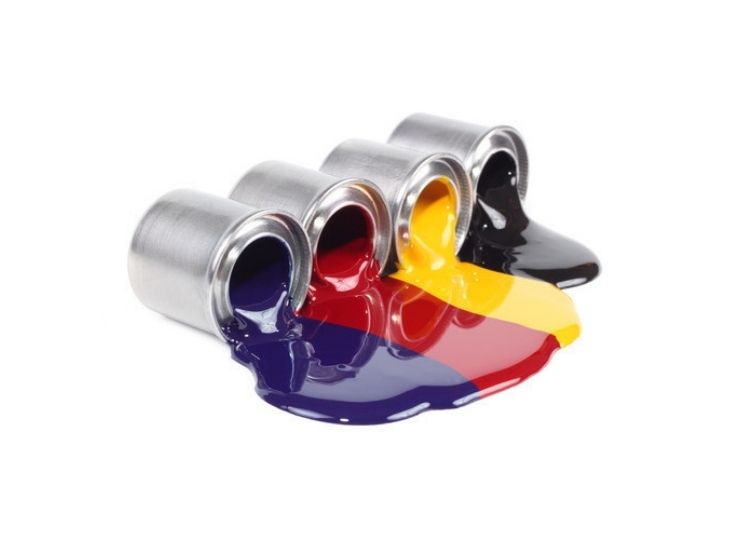“The need for eco-friendly products will only increase over time as regulations tighten and public awareness of environmental issues continues to grow,” confirmed Toyo Ink corporate communications officer Yu Adachi in 2010.
There has been a rise in sustainable inks as well as printing techniques usage as label and packaging industry is making efforts to drive down its environmental impact. Sustainable inks are not only eco-friendly but do result in reducing printing costs as well, especially in flexographic printing. In recent years flexographic printing has grown to be the most used print technology when it comes to label and packaging printing.
Flexographic Printing
The printing process known as flexographic printing is a technique that uses a flexible printing plate. Before, these plates were made of rubber, but today printers prefer using photopolymer plates. The plates are wrapped around cylinders on a web press, and the inked plates have raised images that rotate at high speeds to transfer the ink through small holes from the anilox rolls to the substrate; each color requires a separate printing plate. Because of developments in anilox rolls, printing plates and inks along with improved presses, you can now print images with extremely high line counts in flexographic printing. It is one of the most reliable ways to produce large orders of high-quality custom labels in a short time.
For sustainable printing production with high quality, it is imperative to start using sustainable inks on your flexographic press.
5 sustainable inks for labeling and packaging
While it is non contestable that there is no such ink which is 100% sustainable, there certainly lies a somewhat hierarchy between inks, with some more eco-friendly than others.
At the moment, there are five prominent sustainable flexo inks that are widely being used for packaging:
- Water-based inks
- Soy
- Vegetable
- UV inks
- Algae inks
Water-Based Inks
Water-based inks have been in regular use for decades now and do provide an alternative to petroleum-based solvents which raise the levels of VOCs, toxic substances and result in increased consumption of energy.
Water-based inks are one of the oldest sustainable inks around and quite suitable for highly absorbent substrates such as corrugated paperboard. And what adds to its preference among printers is that final prints look great with them; they achieve their sustainability goal without compromising print quality.
In addition to this they are:
- Easy to clean
- Simple to store
- Are compatible with elastomer image carriers.
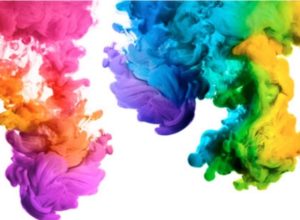
Flexographic printing with water-based inks guarantees great detailing and quality in the final print- all while without leaving any harmful solvents in the environment.
Soy Inks
The natural ingredients used to make Soy inks are easier to recycle and breakdown faster than conventional inks. It verifies soy inks to be biodegradable in nature and they leave no harmful impact on the environment compared to other inks.
As Soy Inks are made from renewable sources, they cost much less and with their faster degradation, about 400% faster than others, it remains a viable alternative for printers seriously looking to reduce their carbon footprint.
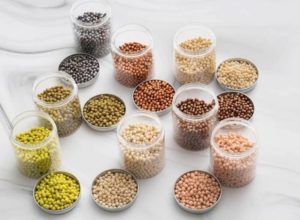
Vegetable Inks
Vegetable inks are generally made of flax, safflower, and canola and they have certain advantages over other inks. The foremost one is that they are not restricted to only one crop and can be easily sourced from different crops. Another one is that it can be printed with great detailing on recycled papers as well. Therefore, if recycled paper has to be used as a substrate for production, then these inks might better serve for better quality print. Lastly, they can be easily removed from the wastepaper while de-inking to recycle the paper.
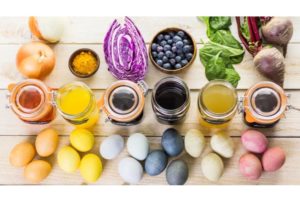
UV Inks
Before starting with UV inks, a brief mention of the main distinction between different kinds of inks is required. Generally speaking, most inks are predominantly categorized into two- volatile inks and curable inks. Volatile inks are common type and they cure via absorption. Curable inks, on the other hand, have low absorption in comparison and get dry through UV light or an electronic beam.
UV flexo printing press machines use energy-efficient UV lamps to cure specially-formulated inks which are VOC and solvent-free. The ink does not dry on the plate, unlike solvent ink offset printers, making it more eco-friendly as it prevents waste from drying and it’s also less messy.
These inks have regularly and widely been used in label printing, but in packaging their use is limited for the presence of photoinitiators.

Algae Inks
Often dubbed as “the most sustainable ink”, algae inks have a negative carbon footprint and reduce carbon emissions by 200% approximately. Algae inks do have pigments which are formulated from an advanced renewable derivative known as algae cell. The black ink from these algae cells is darker and more resistant to UV in comparison to the usual black ink of another types.
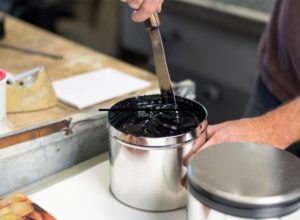
Moreover, algae inks do not require any special handling. During job changes that require shorter ready time, algae inks can be easily cleansed off of flexographic plates than any other inks and save time in addition to their low impact on environment.
In addition to these inks for sustainable printing, there has been an upward trend that is being seen in usage of energy-curable inks, especially Electronic Beam (EB). They have low migration risk that makes them better suited for food packaging compared to UV curable inks that do contain significant amount of photoinitiators. However, owing to their relatively high cost and technological complexity, it would be some time before it will be used vastly in packaging as it should be.
Other Sustainable Packaging Ways
Inks and substrates are prominently responsible for sustainable flexo printing. But that doesn’t necessarily exclude processes involved and equipment.
For instance, by employing Ink control automation printers can easily achieve sustainability without sacrificing quality. It streamlines the printing operations to reduce waste by using only the required amount of ink.
Another way to attain sustainable packaging is to use elastomer sleeves rather than photopolymer plates. The latter creates a lot of waste, especially with all the chemicals needed to clean the plates. On the other hand, Elastomer sleeves which are made from a durable rubber polymer remain operational compared to other image carrier materials. Moreover, they can be easily cleaned without using any harsh chemicals.
Efficiency contributes to sustainability as well. It is important to lay emphasis on all aspects of printing be it high print quality, fast job changes or short to medium run lengths. When carried out in an efficient way they result in the reduction of setup waste and obsolete stock.
The packaging industry, like much of the world around us, is making consistent efforts to become more sustainable and eco-friendlier. And flexographic printing has not remained untouched from these practices to reduce their overall environmental impact. Sustainable inks do provide an alternative to the solvent-based inks that leave harmful components in the environment. They are being used by printers to attain their sustainability goals and high-quality printing at the same time.
Machine Dalal is a foremost platform for the print, packaging and converting industry professional to connect directly with each other, conveniently interact and trade their machines anytime and anywhere in the world.
Visit the Machine Dalal website or simply download our app onto your Android or iOS smartphone.
